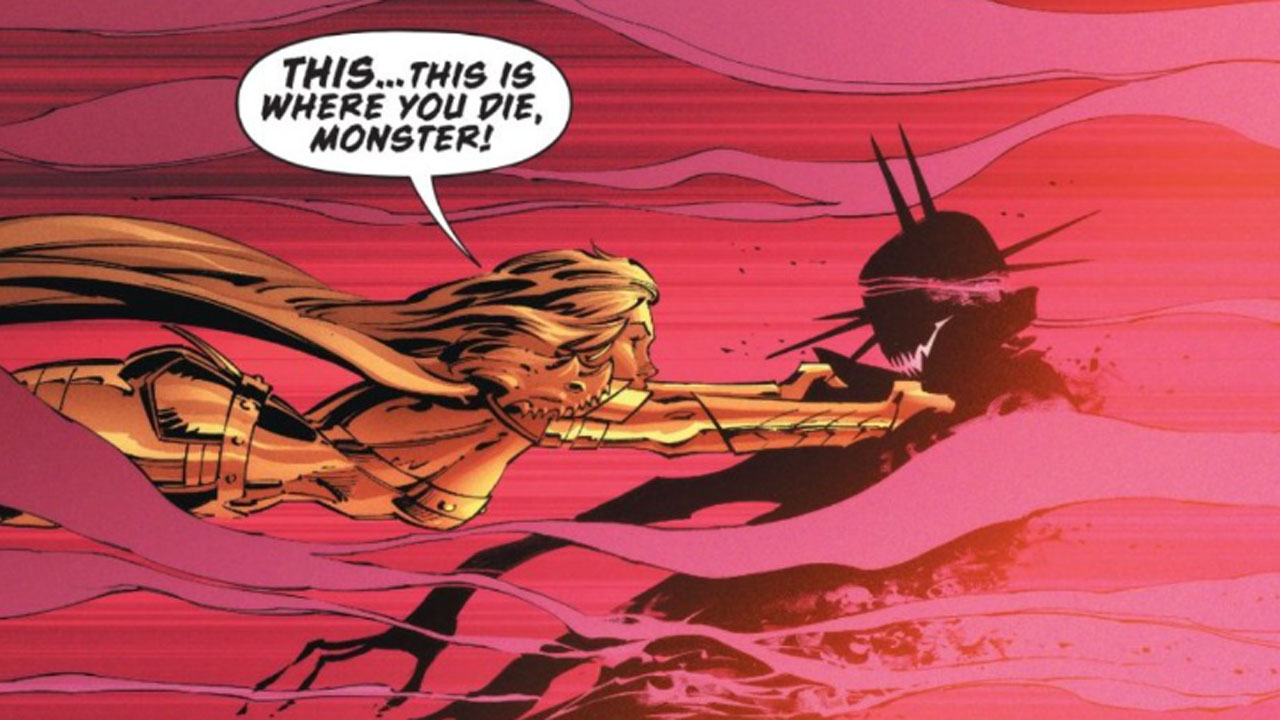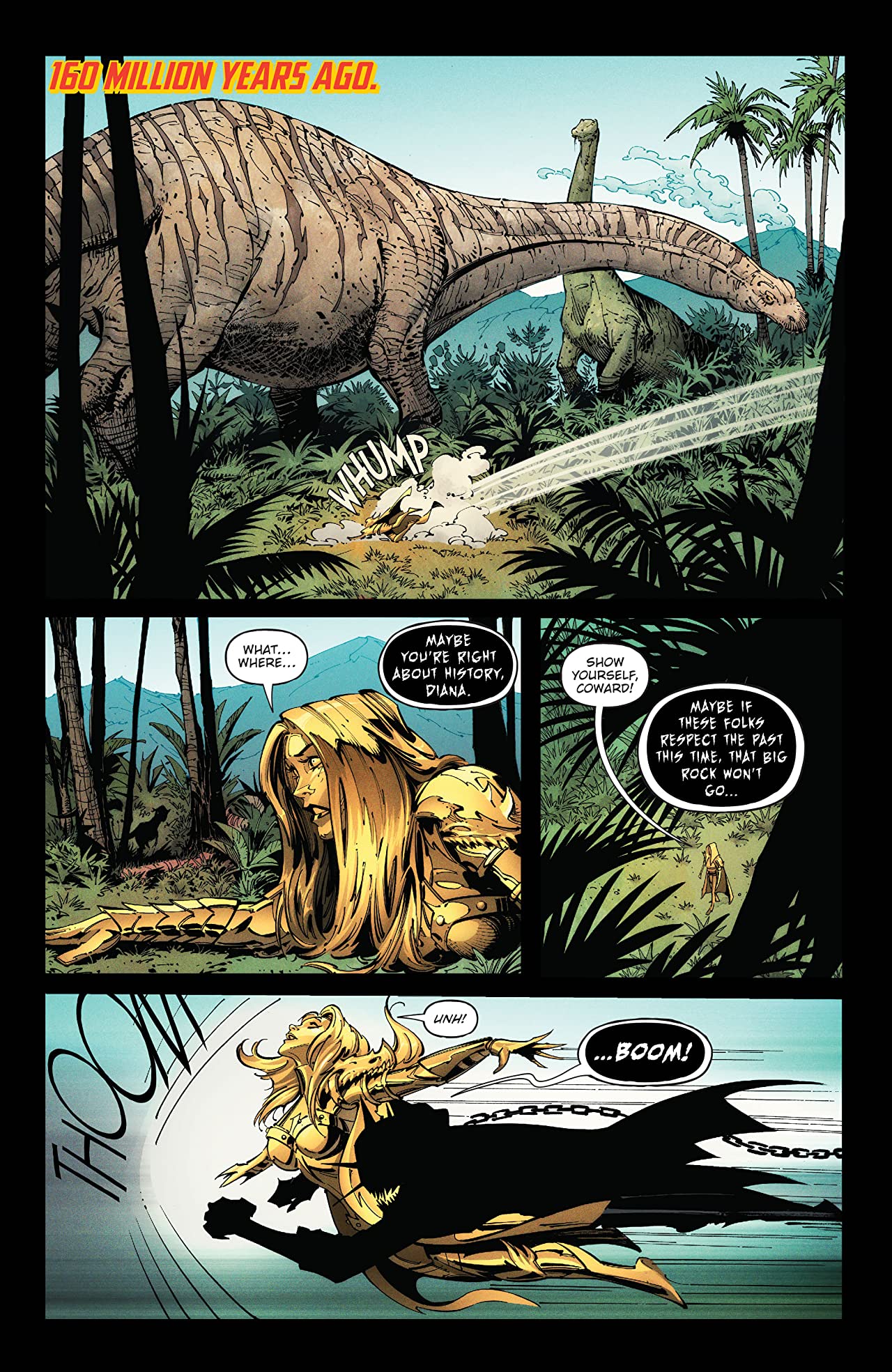Best Shots review - Dark Nights: Death Metal #7 "an incredibly slick package, a taster of DC's year to come"
Scott Snyder and Greg Capullo's Dark Nights: Death Metal finale is as much a beginning as it is an ending

It's done. After seven momentous issues, Scott Snyder and Greg Capullo's swansong to the superhero finally ends. As Dark Nights: Death Metal #7 reaches its hopeful conclusion, the DC Omniverse begins. This finale is that much-needed second bookend, sturdily holding the story's middle together while looking gorgeous on the shelf. With a triumphant epilogue drawn by Yanick Paquette and Bryan Hitch, Snyder focuses firmly on the future, 'infinite' frontier. And while much of this event's climax is inevitable, there are a few genuine surprises along the way.
Written by Scott Snyder
Art by Greg Capullo, Yanick Paquette, Bryan Hitch, Jonathon Glapion, FCO Plascencia, Nathan Fairbairn, and Alex Sinclair
Lettering by John Napolitano
Published by DC
'Rama Rating: 9 out of 10
Tone-wise, Snyder revels in the good-natured humor he's been enjoying throughout Death Metal. Joker gorges himself on battering Robins, Lex desperately tries to get one Superman killed, the obligatory "I'm Batman" reference. It's all here, delivered with the manic enthusiasm of a writer eager to get everything in.
The battle ends as much as you would expect, but it's far from the focus. No, the focus here is on establishing that ‘one universe' concept Snyder introduced earlier in the series, and he does so with flair. The Hands, often used in visual depictions of DC multiverse creation across the decades and briefly alluded to in a couple of lines of dialogue, immediately center themselves here at the heart of creation. It's a logical and thematically fitting addition to the wider DC lore. Although Death Metal initially masqueraded as a Bat story, it quickly became clear that the iconography of Batman was mostly set dressing. While Snyder has spent the height of his DC career under that eponymous black cape, he concludes it with gold. Snyder puts Wonder Woman on a pedestal as the purest ideal of a superhero and ascends her to godhood. It's effective stuff.

In a confident version of that classic ‘humanity meets its maker' story, one of the Hands presents itself as Golden Age Wonder Woman to set out the new world to Diana. FCO Plascencia outdoes himself in coloring this sequence, contrasting the pale classic, and almost inhuman ideal of Wonder Woman with the battle-hardened real thing. Capullo's art works best here also, benefiting from the sparse composition and an opportunity for a more studied figure.
Outside of Earth-shattering plot revelations, there's isn't a huge amount of character work here outside of the snarky stuff. Sgt. Rock narrates throughout, in an unashamedly old-school descriptive style that we don't get all that much these days outside of Todd McFarlane's Spawn. Snyder uses Rock's ordinary presence to inject a sense of vulnerability and humanity into this impossible tale of Gods exploding each other. These final two pages are drawn by Bryan Hitch, who captures the grizzled vet well. Sgt. Rock as the narrator has been an inspired choice throughout the series, and Snyder uses him to his full potential here. Plunked back in Earth-0 during World War 2, Snyder completes the circle. Where it begins, it ends. Fittingly, the very last page of the last pre-'Future State' book is a bold splash of the JSA.

Dark Nights: Death Metal #7 preview


One sheer black panel separates Capullo's gritty war with Yanick Paquette's bold new world. And it's on the other side of the war that Scott Snyder really gets into the detail of the new DC Omniverse. It's been impossible to ignore the editorial changes that have taken place at DC throughout Death Metal's eight-month run. It wasn't always exactly clear where Death Metal sat in continuity, but the answer was always there. Everything is in continuity. Nothing is in continuity. Everything matters. Nothing matters. The reader decides. Paquette's clean lines and emotive figures illustrate the ecstasies of a war won, of heroes and villains united to map out the Omniverse. It's bright and hopeful, a palette cleanser from all the grime and gore. That's not to take away from Capullo's intricate and energetic line work, who flexes his power early on with a frame-worthy vertical double-page spread.
Ultimately, Dark Nights: Death Metal #7 is the final part of yet another event. It's not especially original or unique, but that's not the point. Death Metal #7 is an incredibly slick package, a taster of DC's year to come. Snyder, Capullo, Paquette, and (albeit briefly) Hitch offer up a vision with such clarity that it pierces through that cynical husk of every current direct market reader. Issue-by-issue, Snyder's wild world of Mad Max Batmen has given way to this united front of heroism. I gotta admit, it's exciting.
Get the best comic news, insights, opinions, analysis and more!
Dark Nights: Death Metal #7 is available now in print and digitally. Check out Newsarama's list of the best digital comic readers for Android and iOS devices.
Oscar Maltby has been writing about comics since 2015. He has also written comic book scripts for the British small press and short fiction for Ahoy Comics. He resides on the South Coast of England but lives in the longbox.



